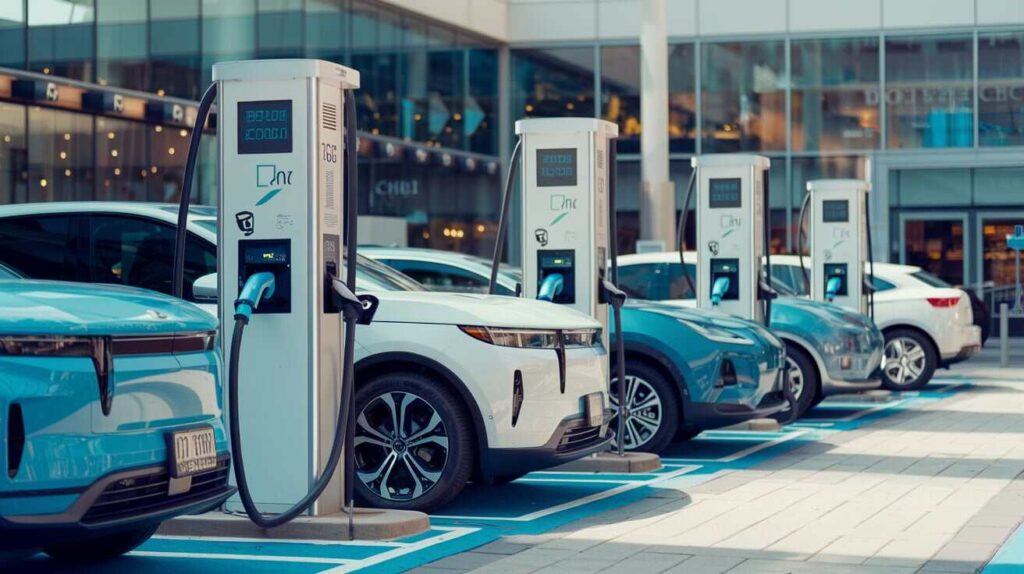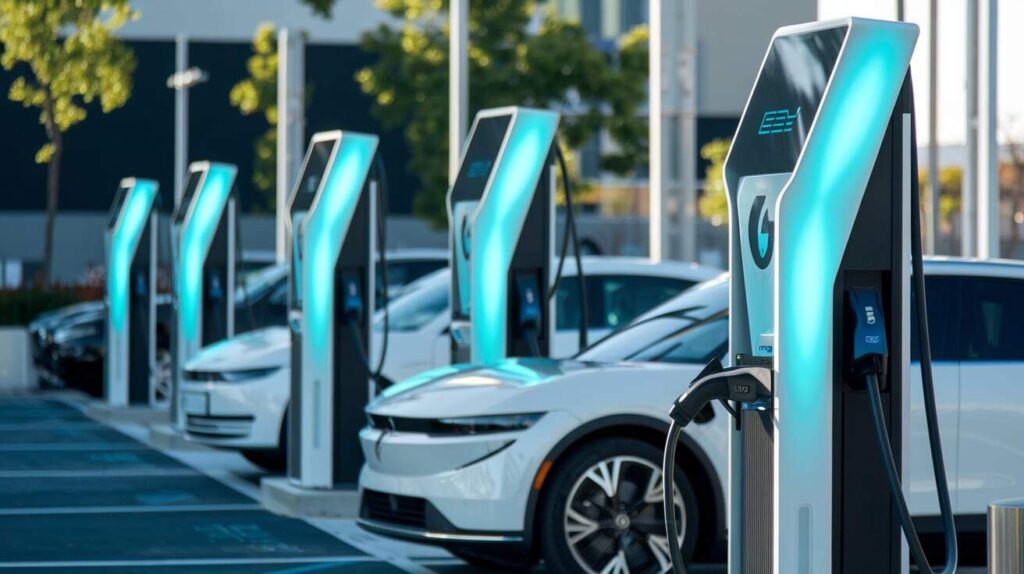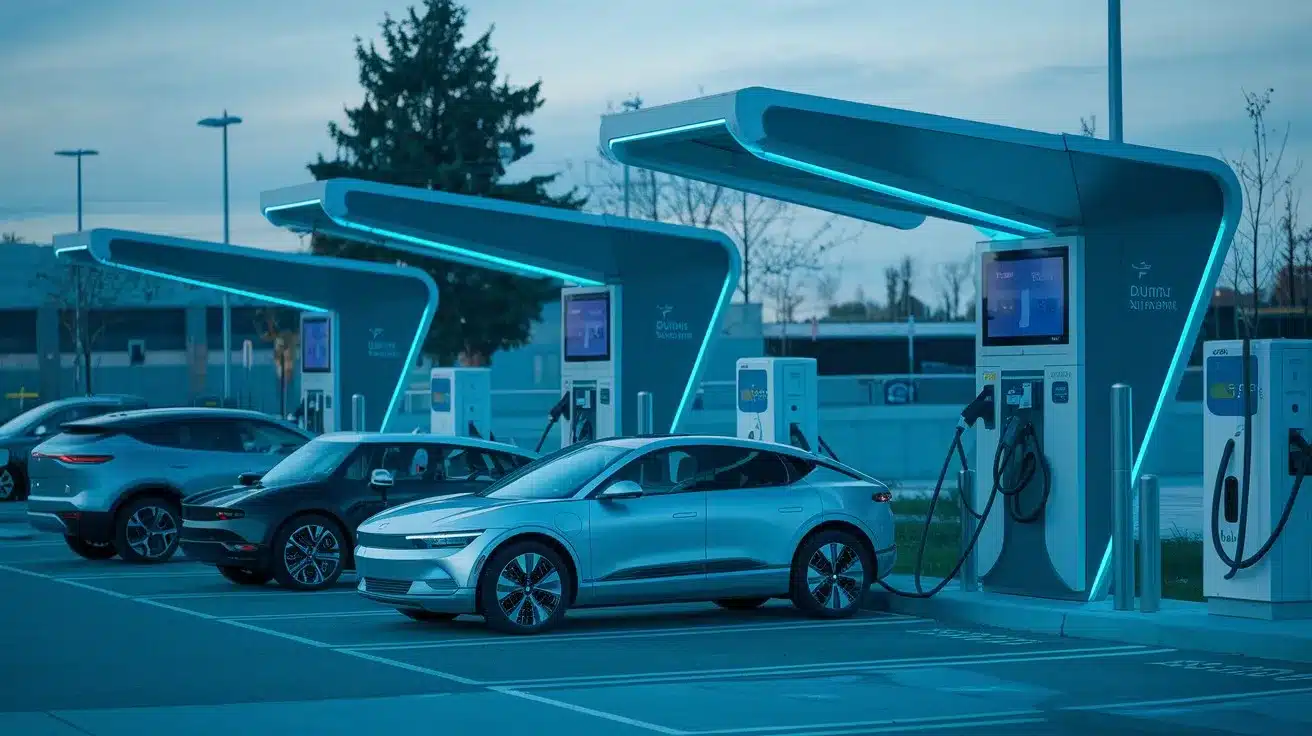Electric vehicles (EVs) are no longer just a futuristic concept; they are becoming an essential part of our daily lives. As the automotive world shifts towards sustainability, EV charging stations have emerged as a crucial infrastructure component, enabling the widespread adoption of electric vehicles. In this guide, we’ll explore the evolution of EV charging stations, their role in revolutionizing transportation, and how they compare to traditional fuel costs. Let’s dive in!
What Are EV Charging Stations?
EV charging stations are facilities designed to recharge the batteries of electric vehicles. Think of them as gas stations for EVs, but instead of pumping petrol or diesel, they deliver electricity to power your car. These stations come in various types, offering different charging speeds to suit varying needs.
Why Are EV Charging Stations Important?
As the world battles climate change and looks for greener alternatives, EVs stand out as an eco-friendly solution. However, for EVs to become mainstream, a robust charging infrastructure is essential. Without enough charging points, the convenience of owning an EV diminishes significantly.
- Supports sustainability: Reduces dependence on fossil fuels.
- Convenience: Ensures EV owners can charge anytime, anywhere.
- Economic benefits: Encourages investment in renewable energy sources.
Types of EV Charging Stations
EV charging stations are categorized based on their charging speed and power output. Here’s a breakdown:
Level 1 Charging Stations
- Power Output: Up to 2.5 kW
- Charging Speed: Slow, taking up to 20 hours for a full charge.
- Best For: Home use with regular overnight charging.
Level 2 Charging Stations
- Power Output: 7-22 kW
- Charging Speed: Moderate, taking 4-8 hours for a full charge.
- Best For: Public spaces, workplaces, and faster home charging.
DC Fast Charging Stations
- Power Output: 50-350 kW
- Charging Speed: Rapid, recharging 80% in 30 minutes.
- Best For: Highways and public fast-charging needs.
Not all EV Charging Stations are the same. Here’s a look at the different types:
Public and Workplace Chargers
- Ideal for commuters.
- Often located in parking lots, shopping centers, or office complexes.
Home Charging Stations
- Convenient and cost-effective for personal use.
- Most homeowners prefer Level 2 chargers for faster charging.
Fast Charging Stations
- Designed for long-distance travelers.
- Capable of charging up to 80% in just 30 minutes.
Installation Costs of EV Charging Stations
Installing an EV Charging Station involves more than plugging in wires. It requires careful planning, permitting, and infrastructure upgrades.
Procurement and Installation
The total cost depends on the type of EV charger being installed.
- Level 1 Chargers: Basic chargers that use standard outlets, ideal for home use.
- Level 2 Chargers: Faster and more efficient, requiring a dedicated circuit.
- DC Fast Chargers: Designed for quick charging but are more expensive.
Average Cost Per Charger
Here’s a breakdown of average costs:
- Level 1 Chargers: $300–$600 (installation costs are minimal).
- Level 2 Chargers: $400–$6,500 (installation adds $1,000–$3,000).
- DC Fast Chargers: $10,000–$40,000 (installation may exceed $50,000).
Factors Affecting Costs
- Location: Urban installations are often pricier due to higher labor costs.
- Permits: Obtaining permits can add to the timeline and cost.
- Power Supply Upgrades: Older buildings may require upgrades to handle higher loads
California’s 2035 EV Mandate
California’s plan to ban the sale of gas-powered vehicles by 2035 is a game-changer. This mandate has accelerated the need for more EV Charging Stations, ensuring the state is ready for an all-electric future.
Increasing Fast Charging Stations
The global push for fast chargers is on the rise. Companies like EVgo, ChargePoint, and Tesla are investing heavily in expanding their fast-charging networks.

EV Charging Stations vs. Traditional Fuel Stations: Cost Comparison
Switching to an EV is not just good for the planet; it’s also kinder to your wallet. Here’s how the costs stack up:
| Type | Cost per km (USD) | Cost to Travel 100 km (USD) | Annual Savings (USD) |
|---|---|---|---|
| EV (Home Charging) | 0.02 | 2 | 500 (approx.) |
| EV (Public Charging) | 0.05 | 5 | 300 (approx.) |
| Petrol | 0.10 | 10 | – |
| Diesel | 0.08 | 8 | – |
| Vehicle Type | Cost Per Mile | Monthly Fuel/Charging Cost |
|---|---|---|
| Electric Vehicle | $0.03–$0.05 | $30–$50 |
| Petrol Vehicle | $0.10–$0.15 | $120–$180 |
| Diesel Vehicle | $0.08–$0.12 | $100–$160 |
Key takeaway: Charging an EV at home is significantly cheaper than fueling a petrol or diesel vehicle, making EVs a cost-effective choice in the long run.
The Evolution of EV Charging Stations
When EVs first hit the market, charging stations were scarce and inconvenient. But today, advancements in technology and government incentives have transformed this landscape. Here are some milestones:
- Early 2000s: Introduction of basic home chargers.
- 2010s: Emergence of public charging networks.
- 2020s: Expansion of ultra-fast charging and smart grid integration.
How EV Charging Stations Work
Ever wondered how an EV charging station juices up your car? It’s simpler than you think:
- Connect: Plug your EV into the station using a compatible cable.
- Authentication: Use an app, card, or payment system to start charging.
- Charging: Electricity flows into your EV’s battery.
- Completion: Disconnect when fully charged.
Government Support for EV Charging Stations
One of the key reasons for the rapid adoption of EVs and charging infrastructure is government-backed incentives. Governments worldwide are pushing for EV adoption by offering incentives and subsidies.
Federal Tax Credits
In the U.S., federal tax credits play a pivotal role. Buyers can claim up to $7,500 which has been allocated from Bipartisan infrastructure law in tax credits for purchasing a new EV . These credits also extend to businesses investing in public EV Charging Stations, reducing initial installation costs.
State Rebates and Incentives
Beyond federal support, many states offer their own rebates. For instance:
- California: Provides rebates through the Clean Vehicle Rebate Program.
- New York: Offers grants under the EV Make-Ready Program for businesses installing public chargers.
Utility Rebates
Local utility companies often provide financial incentives for EV owners and businesses installing chargers. For example, utilities may offer:
- Rebates for home EV chargers.
- Subsidies for businesses setting up workplace or public chargers
- United States: Tax credits up to $7,500 for EV buyers and funding for charging infrastructure.
- Europe: Grants and mandates for installing charging stations in public and private spaces.
- Asia: Subsidies for EV manufacturers and station installers.

Benefits of Installing EV Charging Stations
For businesses and property owners, installing EV chargers can be a game-changer:
- Attract Customers: EV drivers are more likely to visit locations with charging facilities.
- Earn Revenue: Public stations can generate income via usage fees.
- Enhance Property Value: Properties with charging stations are more appealing.
Challenges in Building EV Charging Infrastructure
While the future of EVs is bright, building charging stations comes with its own set of challenges:
- High Initial Costs: Equipment and installation can be pricey.
- Grid Capacity Issues: Increased demand may strain electricity grids.
- Location Planning: Stations need to be strategically placed for maximum utility.
Innovations in EV Charging Technology
The EV industry is constantly evolving, and charging technology is no exception:
- Wireless Charging: Simply park your car over a charging pad.
- Vehicle-to-Grid (V2G): Use EVs as energy storage for the grid.
- Ultra-Fast Chargers: Deliver 80% charge in just 10-15 minutes.
Future Trends in EV Charging Stations
The future holds exciting possibilities:
- Solar-Powered Stations: Sustainable and off-grid charging options.
- AI-Driven Optimization: Predict demand and allocate resources efficiently.
- Global Networks: Seamless charging across countries
Conclusion
The rise of EV charging stations is more than just a technological shift; it’s a revolution that’s reshaping how we think about transportation and sustainability. With lower costs, government incentives, and rapid advancements, EVs and their charging infrastructure are paving the way for a cleaner, greener future. If you’ve been on the fence about switching to an EV, there’s never been a better time to make the leap!
FAQs
1. How much does it cost to charge an EV?
The cost varies depending on electricity rates and charger type. On average, charging an EV costs $10–$30 per full charge, much cheaper than fueling a petrol car.
2. What is a DC fast charger?
A DC fast charger is a high-powered charging station capable of charging an EV up to 80% in just 30 minutes.
3. Can I install a charger at home?
Yes! Many EV owners install Level 2 chargers at home for faster and more convenient charging.
4. Are EV charging stations eco-friendly?
Yes, especially those powered by renewable energy. They significantly reduce carbon emissions compared to gas-powered vehicles.
5. What’s the lifespan of an EV battery?
Most EV batteries last 10–20 years depending on usage and maintenance. Regular charging at home or public stations ensures their longevity.










3 thoughts on “The Rise of EV Charging Stations: Powering the Future of Transportation”